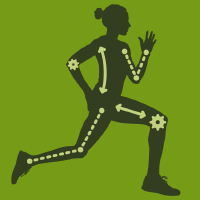Topic Menu
► Topic MenuTopic Editors


Biomechanics and Biomaterial Engineering in Neurological Disorders
Topic Information
Dear Colleagues,
There are many complexities and vague points in the pathophysiology, diagnosis, prognosis, and treatment of neurological disorders. Clarifying these complexities can be difficult for physicians as common neuroimages and clinical symptoms can be confusing to diagnose and treat. The complexities in the management of these disorders may be due to our lack of knowledge about the bioengineering mechanisms of these disorders. Biomechanical analysis and evaluation of changes in biomaterial behavior of head substructures can have a prominent role in solving these problems.
Computer simulations and mathematical modeling can be helpful in finding numerical indicators to evaluate the condition of these patients. Biofluid analysis of intracranial fluid showed the critical impact of the pulsatile interaction of cerebral blood, cerebrospinal fluid, and brain in the management of various neurological disorders. Micro- and nanoparticles also play the main role in the treatment of neurological disorders, specifically brain tumors and cancers, as well as cerebral blood flow disorders. Recent advancements in brain tissue engineering shed light on the fundamental mechanism of central nervous system disorders. The delivery of drugs to the brain via various routes is also an emerging option in the treatment of various central nervous system disorders.
This Topic aims to present the application of biomechanics and biomaterial engineering to clarify the complexities and uncertainties in the mechanism of neurological disorders. This collection will provide neurosurgeons, neurophysicians, and neuroengineers with valuable data to help the diagnosis and treatment development of a broad spectrum of central nervous system disorders.
This Topic invites high-quality original research, hypothesis, technical notes, and review articles in all aspects of the rapidly expanding area of applications of biomechanics and biomaterial engineering in the pathophysiology, diagnosis, prognosis, and treatment of neurological disorders.
Dr. Seifollah Gholampour
Dr. Mohammad Reza Safaei
Topic Editors
Keywords
- Brain biomechanics
- Biomaterials in brain tissue engineering
- Neurological disorder
- Computer simulation and modeling
- Drug delivery
- Cerebral blood flow
- Cerebrospinal fluid dynamics
- Cell engineering
- Brain tumor and cancer
- Nanoparticle
Participating Journals
| Journal Name | Impact Factor | CiteScore | Launched Year | First Decision (median) | APC |
|---|---|---|---|---|---|

Biomechanics
|
- | - | 2021 | 23.8 Days | CHF 1000 |

Biomedicines
|
4.7 | 3.7 | 2013 | 15.4 Days | CHF 2600 |

Brain Sciences
|
3.3 | 3.9 | 2011 | 15.6 Days | CHF 2200 |

Materials
|
3.4 | 5.2 | 2008 | 13.9 Days | CHF 2600 |

Nanomaterials
|
5.3 | 7.4 | 2010 | 13.6 Days | CHF 2900 |

MDPI Topics is cooperating with Preprints.org and has built a direct connection between MDPI journals and Preprints.org. Authors are encouraged to enjoy the benefits by posting a preprint at Preprints.org prior to publication:
- Immediately share your ideas ahead of publication and establish your research priority;
- Protect your idea from being stolen with this time-stamped preprint article;
- Enhance the exposure and impact of your research;
- Receive feedback from your peers in advance;
- Have it indexed in Web of Science (Preprint Citation Index), Google Scholar, Crossref, SHARE, PrePubMed, Scilit and Europe PMC.

